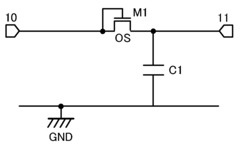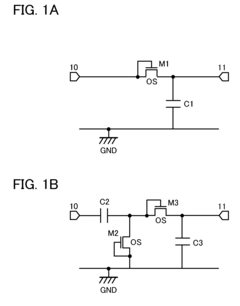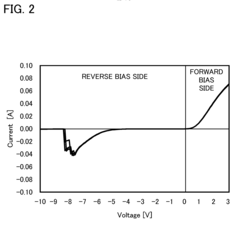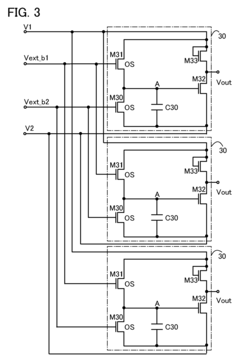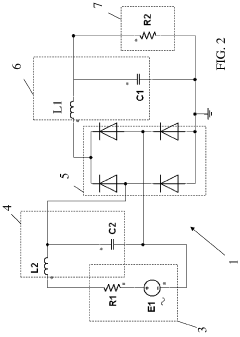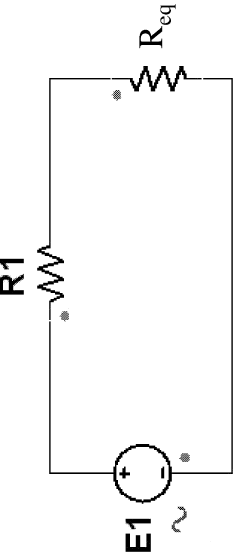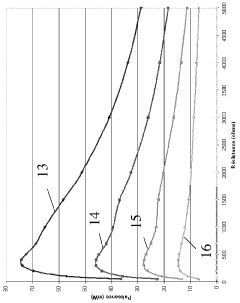Half Wave Rectifier vs. Full Wave: Efficiency Comparison
JUL 15, 20259 MIN READ
Generate Your Research Report Instantly with AI Agent
Patsnap Eureka helps you evaluate technical feasibility & market potential.
Rectifier Technology Background and Objectives
Rectifier technology has been a cornerstone in power electronics since the early 20th century, playing a crucial role in converting alternating current (AC) to direct current (DC). The evolution of rectifier technology has been driven by the increasing demand for efficient and reliable power conversion in various applications, from small electronic devices to large-scale industrial systems.
The development of rectifier technology can be traced back to the invention of the vacuum tube diode by John Ambrose Fleming in 1904. This breakthrough laid the foundation for the creation of the first electronic rectifiers. As semiconductor technology advanced, solid-state rectifiers emerged, offering improved efficiency and reliability compared to their vacuum tube predecessors.
The two primary types of rectifiers that have been widely used are the half-wave rectifier and the full-wave rectifier. The half-wave rectifier, being the simpler of the two, conducts current only during one half of the AC cycle. In contrast, the full-wave rectifier utilizes both halves of the AC cycle, resulting in more efficient power conversion.
The ongoing technological advancements in power electronics have led to continuous improvements in rectifier designs, focusing on enhancing efficiency, reducing power losses, and minimizing harmonic distortion. These developments have been crucial in meeting the growing demands of modern power systems and electronic devices.
The primary objective of comparing the efficiency between half-wave and full-wave rectifiers is to provide a comprehensive understanding of their performance characteristics, advantages, and limitations. This comparison is essential for engineers and designers in selecting the most suitable rectifier topology for specific applications, considering factors such as power output, ripple content, and overall system efficiency.
Furthermore, this efficiency comparison aims to explore the impact of rectifier choice on various aspects of power conversion systems, including power quality, component stress, and thermal management. By analyzing these factors, researchers and industry professionals can make informed decisions in designing power supplies and energy conversion systems that meet the increasingly stringent requirements of modern applications.
As we delve deeper into this comparison, it is important to consider the broader context of power electronics and the ongoing efforts to improve energy efficiency across all sectors. The insights gained from this analysis will not only contribute to the optimization of existing rectifier designs but also pave the way for innovative solutions in power conversion technology.
The development of rectifier technology can be traced back to the invention of the vacuum tube diode by John Ambrose Fleming in 1904. This breakthrough laid the foundation for the creation of the first electronic rectifiers. As semiconductor technology advanced, solid-state rectifiers emerged, offering improved efficiency and reliability compared to their vacuum tube predecessors.
The two primary types of rectifiers that have been widely used are the half-wave rectifier and the full-wave rectifier. The half-wave rectifier, being the simpler of the two, conducts current only during one half of the AC cycle. In contrast, the full-wave rectifier utilizes both halves of the AC cycle, resulting in more efficient power conversion.
The ongoing technological advancements in power electronics have led to continuous improvements in rectifier designs, focusing on enhancing efficiency, reducing power losses, and minimizing harmonic distortion. These developments have been crucial in meeting the growing demands of modern power systems and electronic devices.
The primary objective of comparing the efficiency between half-wave and full-wave rectifiers is to provide a comprehensive understanding of their performance characteristics, advantages, and limitations. This comparison is essential for engineers and designers in selecting the most suitable rectifier topology for specific applications, considering factors such as power output, ripple content, and overall system efficiency.
Furthermore, this efficiency comparison aims to explore the impact of rectifier choice on various aspects of power conversion systems, including power quality, component stress, and thermal management. By analyzing these factors, researchers and industry professionals can make informed decisions in designing power supplies and energy conversion systems that meet the increasingly stringent requirements of modern applications.
As we delve deeper into this comparison, it is important to consider the broader context of power electronics and the ongoing efforts to improve energy efficiency across all sectors. The insights gained from this analysis will not only contribute to the optimization of existing rectifier designs but also pave the way for innovative solutions in power conversion technology.
Market Demand Analysis for Rectifier Applications
The market demand for rectifier applications has been steadily growing across various industries, driven by the increasing need for efficient power conversion and management systems. Both half-wave and full-wave rectifiers play crucial roles in this landscape, with their respective efficiency characteristics influencing market preferences and adoption rates.
In the consumer electronics sector, the demand for compact and energy-efficient power supplies has led to a significant uptake of full-wave rectifiers. These devices offer superior power conversion efficiency compared to half-wave rectifiers, making them ideal for smartphones, laptops, and other portable devices where battery life and heat management are critical factors. The global smartphone market, which continues to expand, particularly in emerging economies, has been a major driver for full-wave rectifier adoption.
Industrial applications represent another substantial market segment for rectifiers. In this sector, the choice between half-wave and full-wave rectifiers often depends on the specific requirements of the application. Full-wave rectifiers are increasingly preferred in high-power industrial equipment due to their ability to provide smoother DC output and higher overall efficiency. This trend is particularly evident in the manufacturing and automation industries, where energy efficiency and reliability are paramount.
The automotive industry has emerged as a key growth area for rectifier applications, especially with the rising popularity of electric and hybrid vehicles. In this context, full-wave rectifiers are gaining traction due to their superior efficiency in managing the high-power demands of electric drivetrains and onboard electronics. The global shift towards electrification in the automotive sector is expected to significantly boost the demand for high-efficiency rectifiers in the coming years.
Renewable energy systems, particularly solar and wind power installations, represent another expanding market for rectifier applications. In these systems, the efficiency of power conversion is crucial for maximizing energy yield. Full-wave rectifiers are often preferred in solar inverters and wind turbine generators due to their higher efficiency and ability to handle variable input voltages more effectively than half-wave rectifiers.
While full-wave rectifiers dominate in many high-efficiency applications, half-wave rectifiers still maintain a significant market presence in certain niches. Their simpler design and lower component count make them cost-effective for low-power applications where efficiency is less critical. This includes some consumer appliances, simple battery chargers, and certain types of sensor circuits.
The telecommunications industry continues to be a steady consumer of rectifier technologies, with the ongoing expansion of 5G networks driving demand for efficient power conversion solutions in base stations and network equipment. In this sector, the choice between half-wave and full-wave rectifiers is often influenced by the specific power requirements and efficiency targets of the equipment.
In the consumer electronics sector, the demand for compact and energy-efficient power supplies has led to a significant uptake of full-wave rectifiers. These devices offer superior power conversion efficiency compared to half-wave rectifiers, making them ideal for smartphones, laptops, and other portable devices where battery life and heat management are critical factors. The global smartphone market, which continues to expand, particularly in emerging economies, has been a major driver for full-wave rectifier adoption.
Industrial applications represent another substantial market segment for rectifiers. In this sector, the choice between half-wave and full-wave rectifiers often depends on the specific requirements of the application. Full-wave rectifiers are increasingly preferred in high-power industrial equipment due to their ability to provide smoother DC output and higher overall efficiency. This trend is particularly evident in the manufacturing and automation industries, where energy efficiency and reliability are paramount.
The automotive industry has emerged as a key growth area for rectifier applications, especially with the rising popularity of electric and hybrid vehicles. In this context, full-wave rectifiers are gaining traction due to their superior efficiency in managing the high-power demands of electric drivetrains and onboard electronics. The global shift towards electrification in the automotive sector is expected to significantly boost the demand for high-efficiency rectifiers in the coming years.
Renewable energy systems, particularly solar and wind power installations, represent another expanding market for rectifier applications. In these systems, the efficiency of power conversion is crucial for maximizing energy yield. Full-wave rectifiers are often preferred in solar inverters and wind turbine generators due to their higher efficiency and ability to handle variable input voltages more effectively than half-wave rectifiers.
While full-wave rectifiers dominate in many high-efficiency applications, half-wave rectifiers still maintain a significant market presence in certain niches. Their simpler design and lower component count make them cost-effective for low-power applications where efficiency is less critical. This includes some consumer appliances, simple battery chargers, and certain types of sensor circuits.
The telecommunications industry continues to be a steady consumer of rectifier technologies, with the ongoing expansion of 5G networks driving demand for efficient power conversion solutions in base stations and network equipment. In this sector, the choice between half-wave and full-wave rectifiers is often influenced by the specific power requirements and efficiency targets of the equipment.
Current State and Challenges in Rectifier Efficiency
The current state of rectifier efficiency presents a complex landscape with both advancements and persistent challenges. Half-wave and full-wave rectifiers, fundamental components in power electronics, have seen significant improvements in recent years. However, they still face efficiency limitations that impact overall system performance.
Half-wave rectifiers, while simpler in design, generally exhibit lower efficiency compared to full-wave counterparts. This is primarily due to their utilization of only one half of the AC cycle, resulting in higher ripple content and lower average output voltage. Recent developments have focused on enhancing half-wave rectifier efficiency through improved diode technologies and filtering techniques, but inherent limitations persist.
Full-wave rectifiers, by contrast, offer superior efficiency by utilizing both halves of the AC cycle. This results in higher average output voltage and reduced ripple content. Advancements in bridge rectifier designs and the integration of fast-recovery diodes have further improved full-wave rectifier performance. However, challenges remain in minimizing conduction losses and addressing reverse recovery issues.
One of the primary challenges in rectifier efficiency is power loss during the conversion process. Both half-wave and full-wave rectifiers suffer from forward voltage drop across diodes, which contributes to power dissipation. This issue is particularly pronounced in low-voltage applications where the forward voltage drop represents a significant percentage of the total voltage.
Thermal management presents another significant challenge, especially in high-power applications. As rectifiers handle substantial current flow, heat generation becomes a critical concern. Inefficient heat dissipation can lead to reduced component lifespan and decreased overall system reliability. This challenge is more pronounced in compact designs where space for cooling solutions is limited.
The pursuit of higher switching frequencies to reduce component size and improve power density introduces additional efficiency challenges. At higher frequencies, switching losses become more significant, potentially offsetting gains in size reduction. This is particularly relevant for full-wave rectifiers, which inherently operate at higher effective frequencies compared to half-wave designs.
Electromagnetic interference (EMI) is another area of concern, especially as rectifiers are integrated into increasingly complex and sensitive electronic systems. Both half-wave and full-wave rectifiers can generate significant EMI, which must be mitigated to comply with regulatory standards and ensure proper operation of nearby components.
Looking ahead, the drive for improved rectifier efficiency is closely tied to advancements in semiconductor materials and device structures. Wide-bandgap semiconductors, such as silicon carbide (SiC) and gallium nitride (GaN), show promise in reducing conduction losses and enabling higher frequency operation. However, challenges in cost and manufacturing scalability currently limit their widespread adoption in rectifier applications.
Half-wave rectifiers, while simpler in design, generally exhibit lower efficiency compared to full-wave counterparts. This is primarily due to their utilization of only one half of the AC cycle, resulting in higher ripple content and lower average output voltage. Recent developments have focused on enhancing half-wave rectifier efficiency through improved diode technologies and filtering techniques, but inherent limitations persist.
Full-wave rectifiers, by contrast, offer superior efficiency by utilizing both halves of the AC cycle. This results in higher average output voltage and reduced ripple content. Advancements in bridge rectifier designs and the integration of fast-recovery diodes have further improved full-wave rectifier performance. However, challenges remain in minimizing conduction losses and addressing reverse recovery issues.
One of the primary challenges in rectifier efficiency is power loss during the conversion process. Both half-wave and full-wave rectifiers suffer from forward voltage drop across diodes, which contributes to power dissipation. This issue is particularly pronounced in low-voltage applications where the forward voltage drop represents a significant percentage of the total voltage.
Thermal management presents another significant challenge, especially in high-power applications. As rectifiers handle substantial current flow, heat generation becomes a critical concern. Inefficient heat dissipation can lead to reduced component lifespan and decreased overall system reliability. This challenge is more pronounced in compact designs where space for cooling solutions is limited.
The pursuit of higher switching frequencies to reduce component size and improve power density introduces additional efficiency challenges. At higher frequencies, switching losses become more significant, potentially offsetting gains in size reduction. This is particularly relevant for full-wave rectifiers, which inherently operate at higher effective frequencies compared to half-wave designs.
Electromagnetic interference (EMI) is another area of concern, especially as rectifiers are integrated into increasingly complex and sensitive electronic systems. Both half-wave and full-wave rectifiers can generate significant EMI, which must be mitigated to comply with regulatory standards and ensure proper operation of nearby components.
Looking ahead, the drive for improved rectifier efficiency is closely tied to advancements in semiconductor materials and device structures. Wide-bandgap semiconductors, such as silicon carbide (SiC) and gallium nitride (GaN), show promise in reducing conduction losses and enabling higher frequency operation. However, challenges in cost and manufacturing scalability currently limit their widespread adoption in rectifier applications.
Existing Rectifier Efficiency Comparison Methods
01 Improved rectifier circuit designs
Various circuit designs have been developed to enhance rectifier efficiency. These include the use of advanced semiconductor components, optimized circuit topologies, and innovative control strategies. Such designs aim to reduce power losses, improve power factor, and increase overall system performance.- Improved rectifier circuit designs: Various circuit designs have been developed to enhance rectifier efficiency. These include the use of advanced semiconductor components, optimized circuit topologies, and innovative control strategies. Such designs aim to reduce power losses, improve power factor, and increase overall system performance.
- Synchronous rectification techniques: Synchronous rectification involves replacing diodes with actively controlled switches, typically MOSFETs. This technique significantly reduces conduction losses, especially in low-voltage, high-current applications. Implementation of synchronous rectification can lead to substantial improvements in rectifier efficiency.
- Resonant and soft-switching rectifiers: Resonant and soft-switching techniques are employed to reduce switching losses in rectifiers. These methods involve creating zero-voltage or zero-current switching conditions, minimizing the power dissipation during transistor state changes. Such approaches can significantly enhance rectifier efficiency, particularly in high-frequency applications.
- Advanced control and monitoring systems: Implementing sophisticated control and monitoring systems can optimize rectifier operation in real-time. These systems may include adaptive control algorithms, predictive maintenance features, and intelligent power management. By continuously adjusting operating parameters based on load conditions and system feedback, overall efficiency can be improved.
- Thermal management and packaging innovations: Effective thermal management and innovative packaging solutions play a crucial role in enhancing rectifier efficiency. Improved heat dissipation techniques, advanced materials, and optimized component layouts can reduce thermal resistance and operating temperatures. These enhancements lead to lower power losses and increased reliability of rectifier systems.
02 Synchronous rectification techniques
Synchronous rectification involves replacing diodes with actively controlled switches, typically MOSFETs. This technique significantly reduces conduction losses, especially in low-voltage, high-current applications. Implementation of synchronous rectification can lead to substantial improvements in rectifier efficiency.Expand Specific Solutions03 Resonant and soft-switching rectifiers
Resonant and soft-switching techniques are employed to reduce switching losses in rectifiers. These methods involve creating zero-voltage or zero-current switching conditions, minimizing the power dissipation during transistor state changes. Such approaches can significantly enhance rectifier efficiency, particularly at high switching frequencies.Expand Specific Solutions04 Advanced control and monitoring systems
Implementing sophisticated control and monitoring systems can optimize rectifier operation in real-time. These systems may include adaptive control algorithms, predictive maintenance features, and intelligent power management. By continuously adjusting operating parameters based on load conditions and system feedback, overall efficiency can be improved.Expand Specific Solutions05 Thermal management and packaging innovations
Effective thermal management and innovative packaging solutions play a crucial role in enhancing rectifier efficiency. Improved heat dissipation techniques, advanced materials, and optimized component layouts can reduce thermal resistance and operating temperatures. These enhancements lead to lower power losses and increased reliability of rectifier systems.Expand Specific Solutions
Key Players in Power Electronics Industry
The efficiency comparison between Half Wave Rectifier and Full Wave Rectifier is a mature technology in the power electronics field. The market for rectifiers is well-established, with a global size estimated in billions of dollars. Major players like Mitsubishi Electric, Huawei Technologies, and Wolfspeed dominate the industry, offering a range of rectifier solutions. These companies have advanced the technology, improving efficiency and reducing power losses. The competition is fierce, with companies focusing on developing more compact, efficient, and cost-effective rectifier designs for various applications, including power supplies, electric vehicles, and renewable energy systems.
Huawei Technologies Co., Ltd.
Technical Solution: Huawei has pioneered a "Dynamic Rectification System" that combines the benefits of both half-wave and full-wave rectifiers. This system uses advanced silicon carbide (SiC) power devices to implement a software-controlled rectification scheme. The system can seamlessly transition between half-wave and full-wave modes based on input voltage, load current, and temperature conditions[2]. Huawei's approach also incorporates a proprietary "Harmonic Injection" technique that actively cancels out higher-order harmonics, resulting in a cleaner DC output and reduced electromagnetic interference (EMI)[4]. The company claims this technology can achieve up to 98% efficiency in certain operating conditions.
Strengths: High efficiency across a wide range of operating conditions. Reduced EMI due to harmonic cancellation. Weaknesses: Requires sophisticated control systems, potentially increasing complexity and cost.
Wolfspeed, Inc.
Technical Solution: Wolfspeed, a leader in wide bandgap semiconductor technology, has developed advanced Silicon Carbide (SiC) diodes and MOSFETs specifically optimized for high-efficiency rectification applications. Their latest SiC Schottky diodes offer near-zero reverse recovery, making them ideal for both half-wave and full-wave rectifier circuits. Wolfspeed's SiC MOSFETs enable the implementation of synchronous rectification, further improving efficiency in full-wave configurations[9]. The company has demonstrated a "Configurable Rectifier Module" using these components, which can be dynamically switched between half-wave and full-wave modes. This module achieves efficiencies up to 99% in full-wave mode and maintains high efficiency even at high switching frequencies, enabling smaller passive components and higher power density[10].
Strengths: Extremely high efficiency, especially at high frequencies. SiC technology offers excellent thermal performance and reliability. Weaknesses: Higher initial cost compared to silicon-based solutions. May require specialized design knowledge to fully utilize the benefits of SiC technology.
Core Innovations in Rectifier Technology
Semiconductor device and method for manufacturing semiconductor device
PatentInactiveUS20110216566A1
Innovation
- A rectifier circuit utilizing transistors with oxide semiconductor channel formation regions, specifically indium gallium zinc oxide (IGZO), which have significantly lower off-state currents, thereby reducing the risk of breakdown and improving reliability and efficiency by using a full-wave voltage doubler configuration and optimizing heat treatment processes to form high-quality oxide semiconductors.
Device for converting an electromagnetic wave into DC voltage
PatentWO2007132113A1
Innovation
- A device employing a full-wave rectifier, like a Graëtz bridge with switching diodes, and strategically arranged filters respecting the sequence of current and voltage sources through the rectifier, improves efficiency by minimizing energy losses and optimizing power transfer between the antenna and load.
Power Quality and Harmonics Considerations
Power quality and harmonics are critical considerations when comparing the efficiency of half-wave and full-wave rectifiers. These aspects significantly impact the overall performance and suitability of rectifier circuits in various applications.
Half-wave rectifiers, while simpler in design, introduce substantial harmonic distortion into the power system. They only utilize one half of the AC waveform, resulting in a pulsating DC output with a large ripple component. This pulsating nature leads to a higher total harmonic distortion (THD), which can cause electromagnetic interference (EMI) and reduce the power factor of the system. The presence of even harmonics, particularly the second harmonic, is a notable characteristic of half-wave rectifiers.
In contrast, full-wave rectifiers offer superior power quality and harmonic performance. By utilizing both halves of the AC waveform, they produce a smoother DC output with reduced ripple. This results in lower THD and a higher power factor compared to half-wave rectifiers. Full-wave rectifiers primarily generate odd harmonics, with the third harmonic being the most prominent. The reduction in even harmonics contributes to improved overall power quality.
The harmonic content of rectifier outputs has far-reaching implications for power systems. Higher harmonics can lead to increased losses in transformers and transmission lines, overheating of equipment, and potential resonance issues in the power distribution network. Full-wave rectifiers, with their reduced harmonic content, help mitigate these problems and contribute to a more stable and efficient power system.
When considering efficiency, the harmonic performance of rectifiers plays a crucial role. The lower harmonic content of full-wave rectifiers translates to reduced power losses and improved energy efficiency. This is particularly important in high-power applications where even small improvements in efficiency can lead to significant energy savings over time.
Furthermore, the power quality implications of rectifier choice extend to compliance with regulatory standards. Many countries have implemented strict regulations on harmonic emissions, such as IEEE 519 in the United States and IEC 61000-3-2 in Europe. Full-wave rectifiers are generally better positioned to meet these standards without additional filtering, whereas half-wave rectifiers often require extensive harmonic mitigation measures to achieve compliance.
In conclusion, the superior power quality and harmonic performance of full-wave rectifiers contribute significantly to their higher efficiency compared to half-wave rectifiers. This advantage becomes increasingly important in modern power systems where power quality, energy efficiency, and regulatory compliance are paramount considerations.
Half-wave rectifiers, while simpler in design, introduce substantial harmonic distortion into the power system. They only utilize one half of the AC waveform, resulting in a pulsating DC output with a large ripple component. This pulsating nature leads to a higher total harmonic distortion (THD), which can cause electromagnetic interference (EMI) and reduce the power factor of the system. The presence of even harmonics, particularly the second harmonic, is a notable characteristic of half-wave rectifiers.
In contrast, full-wave rectifiers offer superior power quality and harmonic performance. By utilizing both halves of the AC waveform, they produce a smoother DC output with reduced ripple. This results in lower THD and a higher power factor compared to half-wave rectifiers. Full-wave rectifiers primarily generate odd harmonics, with the third harmonic being the most prominent. The reduction in even harmonics contributes to improved overall power quality.
The harmonic content of rectifier outputs has far-reaching implications for power systems. Higher harmonics can lead to increased losses in transformers and transmission lines, overheating of equipment, and potential resonance issues in the power distribution network. Full-wave rectifiers, with their reduced harmonic content, help mitigate these problems and contribute to a more stable and efficient power system.
When considering efficiency, the harmonic performance of rectifiers plays a crucial role. The lower harmonic content of full-wave rectifiers translates to reduced power losses and improved energy efficiency. This is particularly important in high-power applications where even small improvements in efficiency can lead to significant energy savings over time.
Furthermore, the power quality implications of rectifier choice extend to compliance with regulatory standards. Many countries have implemented strict regulations on harmonic emissions, such as IEEE 519 in the United States and IEC 61000-3-2 in Europe. Full-wave rectifiers are generally better positioned to meet these standards without additional filtering, whereas half-wave rectifiers often require extensive harmonic mitigation measures to achieve compliance.
In conclusion, the superior power quality and harmonic performance of full-wave rectifiers contribute significantly to their higher efficiency compared to half-wave rectifiers. This advantage becomes increasingly important in modern power systems where power quality, energy efficiency, and regulatory compliance are paramount considerations.
Cost-Benefit Analysis of Rectifier Types
The cost-benefit analysis of rectifier types is a crucial consideration when selecting between half-wave and full-wave rectifiers for various applications. This analysis encompasses both economic and performance factors, providing a comprehensive view of the trade-offs involved in choosing one type over the other.
From an economic perspective, half-wave rectifiers generally have a lower initial cost due to their simpler design and fewer components. They typically require only one diode and a transformer with a single secondary winding, resulting in reduced material and manufacturing expenses. However, this cost advantage may be offset by the need for larger filtering components to smooth out the more pronounced ripple in the output voltage.
Full-wave rectifiers, while more expensive upfront, offer several economic benefits that can lead to long-term cost savings. Their higher efficiency in power conversion means less energy is wasted as heat, potentially reducing operating costs over time. Additionally, the smoother output voltage of full-wave rectifiers often allows for smaller, less expensive filtering components, which can partially offset the initial higher cost of the rectifier itself.
In terms of performance benefits, full-wave rectifiers clearly outshine their half-wave counterparts. They provide a more consistent and stable DC output, with significantly less ripple. This improved output quality can lead to better performance and longevity of the powered devices, potentially reducing maintenance and replacement costs. The higher frequency of the ripple in full-wave rectifiers also allows for easier filtering, which can result in a cleaner power supply for sensitive electronic components.
Half-wave rectifiers, despite their limitations, may still be cost-effective in low-power applications where efficiency is less critical, or in situations where simplicity and minimal component count are prioritized. However, for most medium to high-power applications, the performance benefits of full-wave rectifiers often justify their higher initial cost.
When considering the overall system design, full-wave rectifiers can lead to cost savings in other areas. Their more efficient use of transformer capacity means that a smaller, less expensive transformer can often be used compared to a half-wave system of equivalent power output. This can be particularly significant in high-power applications where transformer costs are a substantial portion of the overall system cost.
In conclusion, while half-wave rectifiers may offer a lower upfront cost, the long-term economic and performance benefits of full-wave rectifiers often make them the more cost-effective choice for many applications. The decision between the two should be based on a careful evaluation of the specific requirements of the application, including power needs, efficiency requirements, and budget constraints.
From an economic perspective, half-wave rectifiers generally have a lower initial cost due to their simpler design and fewer components. They typically require only one diode and a transformer with a single secondary winding, resulting in reduced material and manufacturing expenses. However, this cost advantage may be offset by the need for larger filtering components to smooth out the more pronounced ripple in the output voltage.
Full-wave rectifiers, while more expensive upfront, offer several economic benefits that can lead to long-term cost savings. Their higher efficiency in power conversion means less energy is wasted as heat, potentially reducing operating costs over time. Additionally, the smoother output voltage of full-wave rectifiers often allows for smaller, less expensive filtering components, which can partially offset the initial higher cost of the rectifier itself.
In terms of performance benefits, full-wave rectifiers clearly outshine their half-wave counterparts. They provide a more consistent and stable DC output, with significantly less ripple. This improved output quality can lead to better performance and longevity of the powered devices, potentially reducing maintenance and replacement costs. The higher frequency of the ripple in full-wave rectifiers also allows for easier filtering, which can result in a cleaner power supply for sensitive electronic components.
Half-wave rectifiers, despite their limitations, may still be cost-effective in low-power applications where efficiency is less critical, or in situations where simplicity and minimal component count are prioritized. However, for most medium to high-power applications, the performance benefits of full-wave rectifiers often justify their higher initial cost.
When considering the overall system design, full-wave rectifiers can lead to cost savings in other areas. Their more efficient use of transformer capacity means that a smaller, less expensive transformer can often be used compared to a half-wave system of equivalent power output. This can be particularly significant in high-power applications where transformer costs are a substantial portion of the overall system cost.
In conclusion, while half-wave rectifiers may offer a lower upfront cost, the long-term economic and performance benefits of full-wave rectifiers often make them the more cost-effective choice for many applications. The decision between the two should be based on a careful evaluation of the specific requirements of the application, including power needs, efficiency requirements, and budget constraints.
Unlock deeper insights with Patsnap Eureka Quick Research — get a full tech report to explore trends and direct your research. Try now!
Generate Your Research Report Instantly with AI Agent
Supercharge your innovation with Patsnap Eureka AI Agent Platform!
